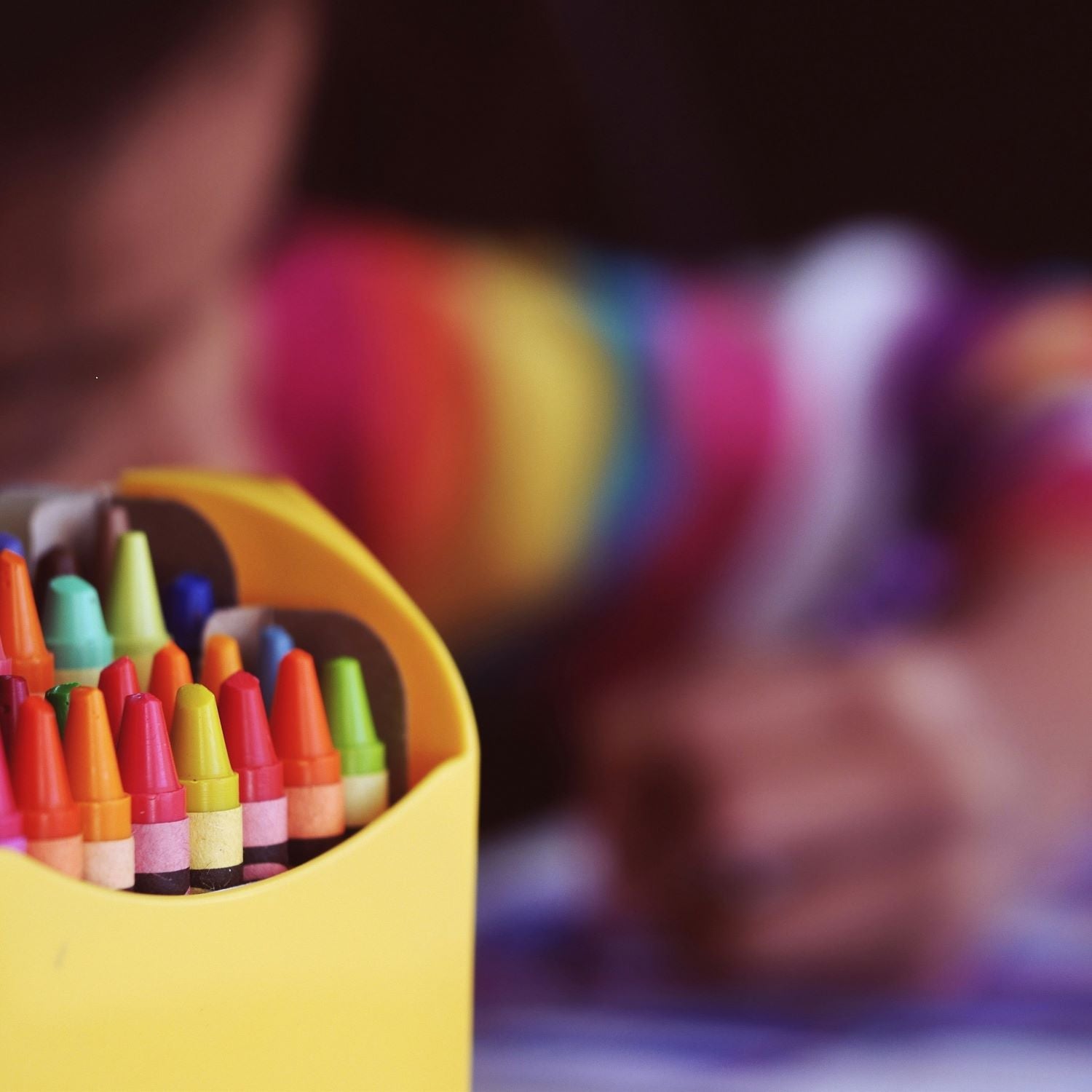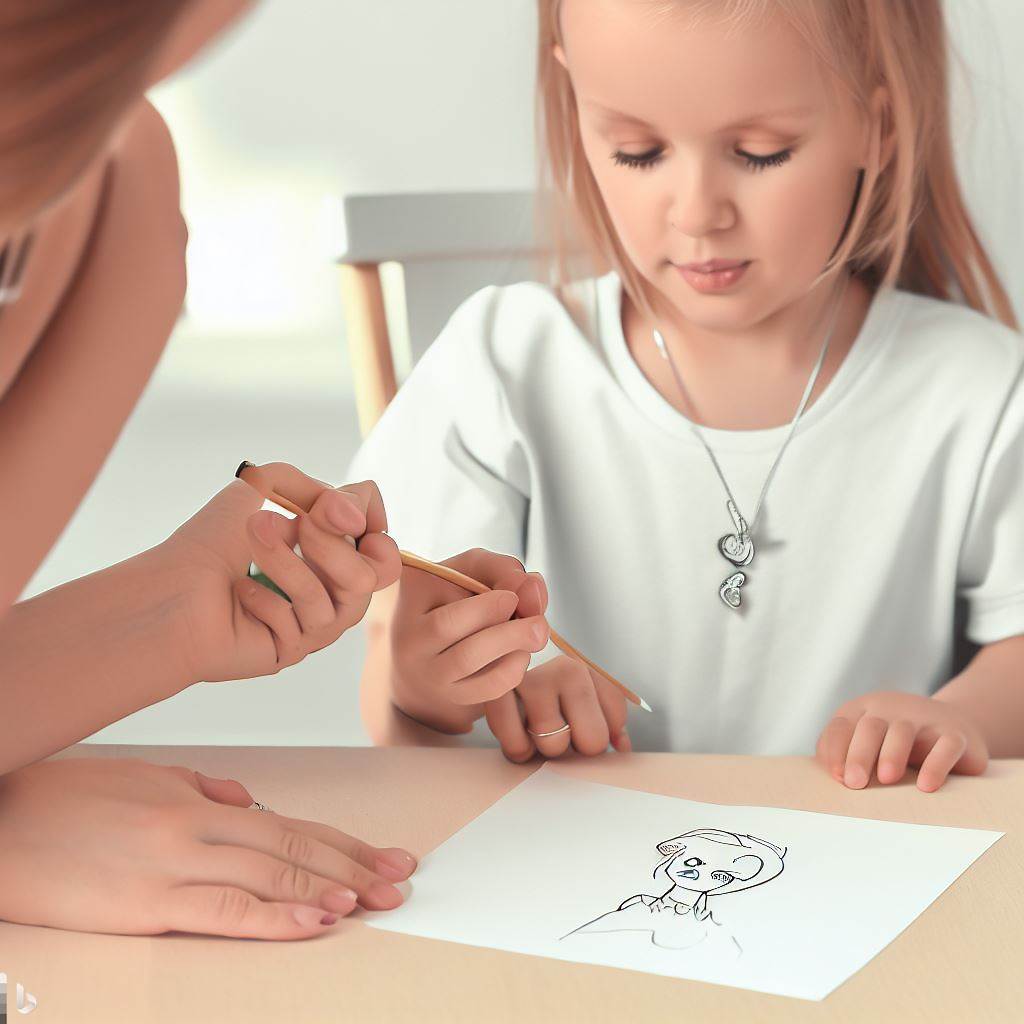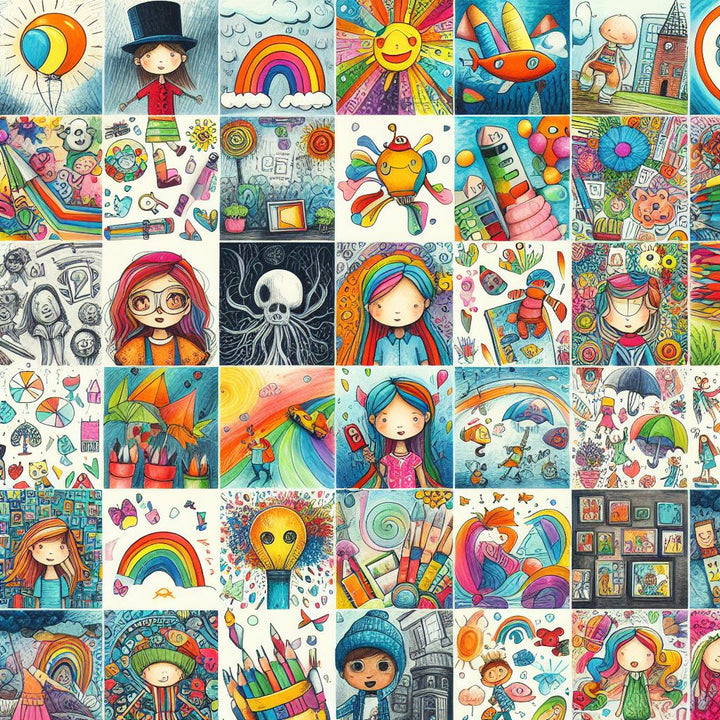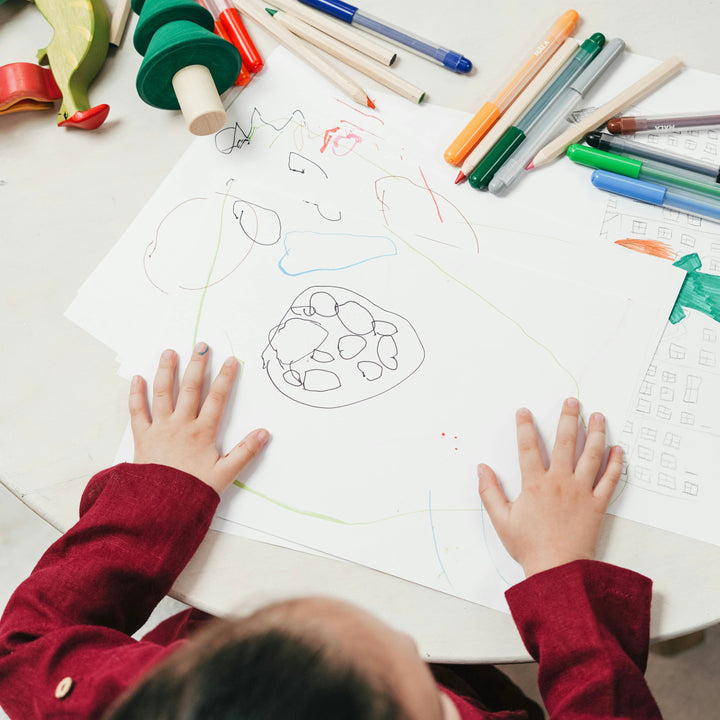From the first scribbles of a toddler wielding a crayon to the more deliberate strokes of a preschooler creating recognizable images, the journey of drawing in early childhood is a fascinating exploration of creativity and cognitive development.
Understanding the stages of drawing in early childhood not only provides insight into children's artistic progression but also offers valuable cues for parents, educators, and caregivers to support their young artists effectively.
In this comprehensive guide, we'll delve into the developmental stages of drawing in early childhood, shedding light on the milestones, techniques, and underlying cognitive processes that shape children's artistic endeavors.
The 5 Stages of Drawing in Early Childhood
The following are the five stages of drawing in early childhood that are commonly accepted globally:
- Scribbling
- Controlled Scribbling
- Pre-Schematic
- Schematic
- Beginning Realism
Stage 1: Scribbling (1-2 Years)
The journey of drawing typically begins with scribbling—a spontaneous and uninhibited form of mark-making that emerges during the toddler years. At this stage, children grasp crayons or markers in their fists and explore the tactile sensation of making marks on paper or other surfaces. Scribbles may appear random and chaotic, lacking any discernible form or structure, but they represent an essential precursor to more deliberate forms of drawing. Through scribbling, children develop basic motor skills, hand-eye coordination, and an early sense of cause and effect, laying the groundwork for future artistic exploration.
Stage 2: Controlled Scribbling (2-3 Years)
As children approach the preschool years, their scribbles begin to exhibit greater control and intentionality. Controlled scribbling involves more deliberate movements and a growing awareness of spatial relationships and hand-eye coordination. Instead of random marks, children may produce circular or looping motions, experimenting with different shapes and patterns. While still largely abstract, controlled scribbling reflects an emerging sense of agency and mastery over mark-making tools, signaling the transition from spontaneous experimentation to intentional expression.
Stage 3: Pre-schematic Drawing (3-4 Years)
During the preschool years, children progress to the stage of pre-schematic drawing, where their artwork begins to show rudimentary representations of objects and figures. Pre-schematic drawings often feature simple shapes, such as circles, ovals, and lines, arranged in a recognizable but abstract manner. Children may attempt to depict familiar objects from their environment, such as houses, trees, and people, using basic symbols or symbols with partial resemblance to the real object. While proportions and details may be distorted or exaggerated, pre-schematic drawings reflect children's growing understanding of symbolic representation and their expanding vocabulary of visual symbols.
Stage 4: Schematic Drawing (4-5 Years)
As children approach kindergarten age, their drawings become increasingly schematic, featuring more recognizable and organized representations of objects and figures. Schematic drawings exhibit greater attention to detail, proportion, and spatial relationships, as children strive to create more realistic depictions of the world around them. While still simplified and stylized, schematic drawings demonstrate a deeper understanding of form, structure, and symbolism. Children may incorporate additional elements such as facial features, limbs, and environmental details, infusing their artwork with greater complexity and narrative richness.
Stage 5: Beginning Realism (5-7 Years)
During the early elementary years, children enter the stage of beginning realism, where their drawings show a heightened emphasis on accuracy, detail, and observational skills. Beginning realist drawings strive to capture the physical characteristics and details of objects and figures more faithfully, reflecting children's growing ability to perceive and represent visual information. While still influenced by imagination and stylization, beginning realist drawings demonstrate a more sophisticated understanding of proportion, perspective, and spatial relationships. Children may experiment with shading, texture, and other techniques to enhance realism and depth in their artwork, signaling a significant milestone in their artistic development.
Supporting Children's Artistic Development
Understanding the stages of drawing in early childhood is invaluable for parents, educators, and caregivers seeking to support children's artistic development effectively. Here are some practical tips for nurturing young artists:
1. Provide ample opportunities for artistic expression
Offer a variety of art materials and surfaces for children to explore, from crayons and markers to paints and clay. Encourage open-ended creative activities that allow children to experiment, express themselves, and develop their unique artistic voice.
2. Celebrate and affirm children's efforts
Praise children for their artistic endeavors, focusing on effort, creativity, and self-expression rather than the finished product. Display their artwork prominently, and encourage them to talk about their drawings, sharing stories and insights about their creative process.
3. Offer guidance and encouragement
Provide gentle guidance and encouragement as children navigate the stages of drawing, offering tips on technique, observation, and problem-solving. Encourage them to experiment with new materials and techniques, fostering a sense of curiosity and exploration.
4. Foster a supportive environment
Create a nurturing and supportive environment where children feel safe to take artistic risks, make mistakes, and learn from experimentation. Avoid overly critical or judgmental feedback, and instead, focus on fostering a love of creativity and self-expression.
5. Model artistic behavior
Demonstrate your own enthusiasm for art and creativity, modeling artistic behavior and a willingness to engage in creative exploration alongside children. Share your own artwork and creative projects, and encourage children to collaborate on collaborative art activities.
Conclusion
The stages of drawing in early childhood offer a window into the rich tapestry of children's artistic development, from the first tentative scribbles to the more sophisticated renderings of beginning realism. By understanding and supporting children's artistic journey, parents, educators, and caregivers can empower young artists to explore, express, and create with confidence and joy. Whether it's through scribbling, pre-schematic drawing, or beginning realism, every stage of drawing is a testament to children's boundless imagination and creative potential. So let's celebrate their artistic endeavors and nurture their budding talents as they embark on this magical journey of self-discovery and expression.






